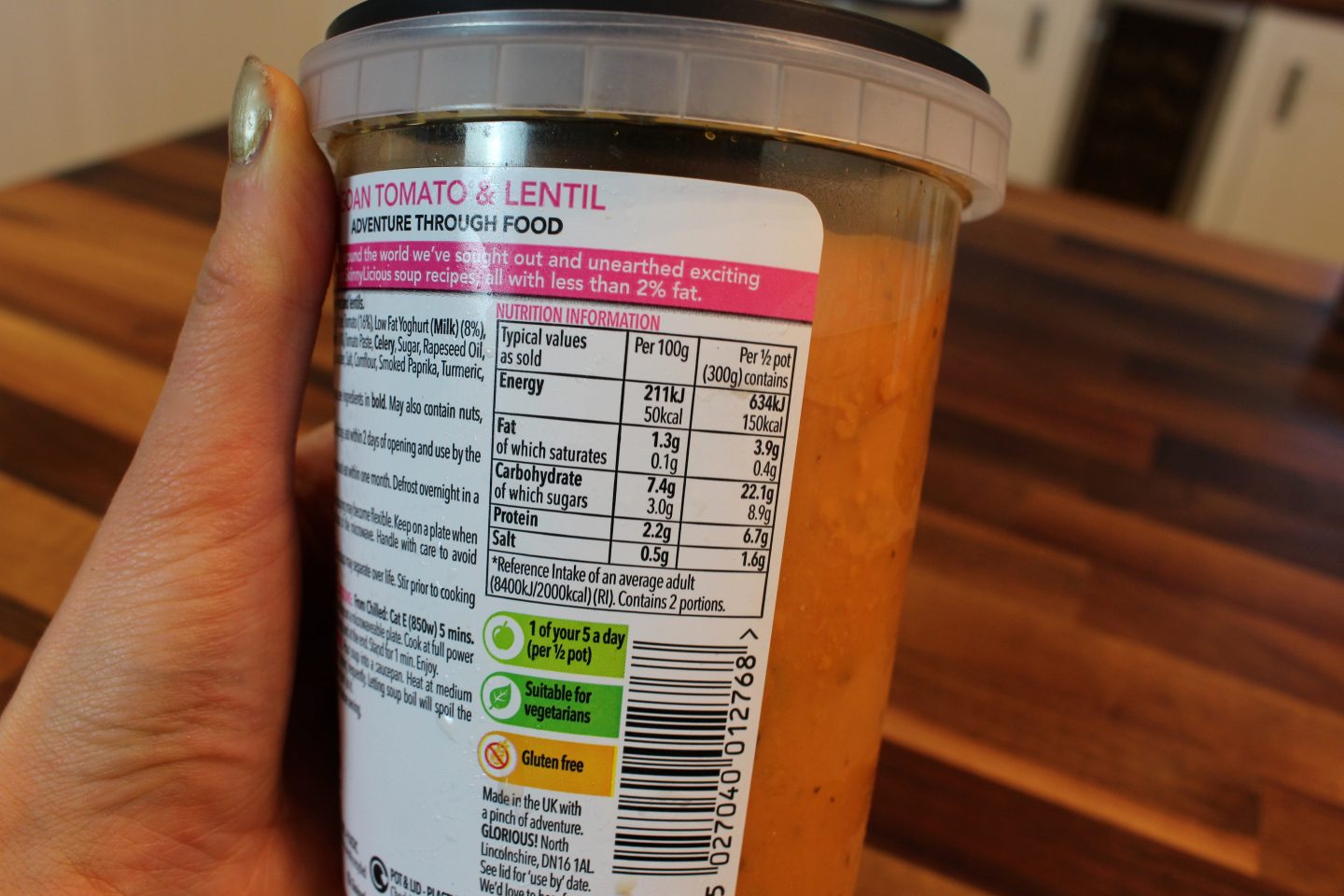
One of the most frequent questions that I get asked as a dietitian is “how can you tell if a (packaged food) product is healthy”, and so in the blog post I’m going to tell you how!
I’ve used one of my favourite fresh soup brands (Glorious! soup) in the video below and in this blog post to point out what four things I personally look at when I’m buying a new product from the Supermarket. I really hope you find the tips useful!
What 4 things to look for on a food label:
1) The Ingredients List
I always say ‘the ingredients list never lies’ and it’s true. When someone asks me ‘is this food (packaged) food healthy’ the first thing I do is turn it over to look at the ingredients list.. to look at what food is actually INSIDE!
Ingredients are listed in order of weight, so the main ingredients in the packaged food always come first. When it comes to soups for example, I would be checking that foods such as vegetables, beans, lentils or chicken were near the top of the list, with spices further down (as they appear in much smaller quantities for flavour).
If sugar is near the top of the ingredients list then you may want to think twice before you buy, just because sugar contains zero nutrients – so all you are paying for is energy (oh and to rot your teeth!).
Regarding common allergens, these will be in bold within the ingredients list e.g. wheat and milk (this is a recent change which means that identifying allergens on the label is even easier).
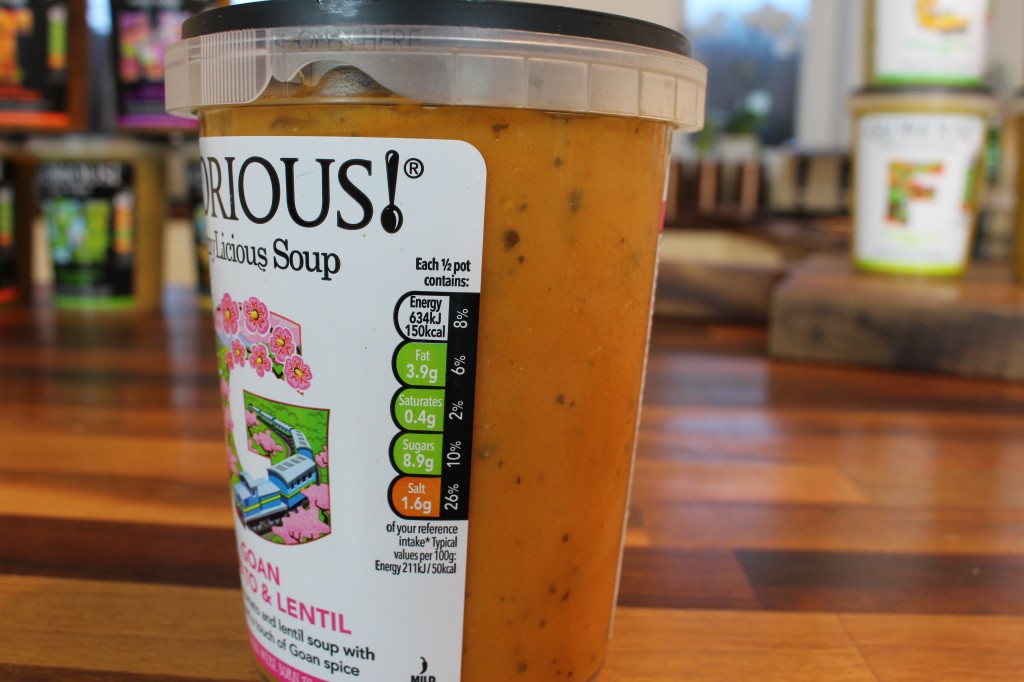
2) The Traffic Light Label
Colour coded nutritional information, as shown above, tells you at a glance if the food is high, medium or low for fats, sugars and salt. Red means ‘high’, amber means ‘medium’ and green means ‘low’. As a general rule we should be eating more products with ‘green’ labels and fewer products with ‘red’.
What the traffic light label doesn’t tell you however is if, for example, the sugar is added or is naturally occurring. Foods such as tomatoes or dates contain natural sugar so it’s always best to check the ingredients list first to see what you’re about to eat!
If a product is high in fat or sugar then this may be an indication that the food is also high in calories; this is particularly true for high fat products as fat contains over twice the amount of calories per gram in comparison to carbs (sugar) and protein (9 calories per gram vs. 4 calories per gram).
The majority of soups will be ‘amber’ for salt which is generally ‘ok’ if you mainly eat whole foods. We should aim to eat less than 6g of salt a day (a heaped teaspoon), however keep in time that 75% of the salt that we eat is already in foods. Foods that tend to be high in salt include salted nuts, crisps, ready meals, fast food and processed meats.
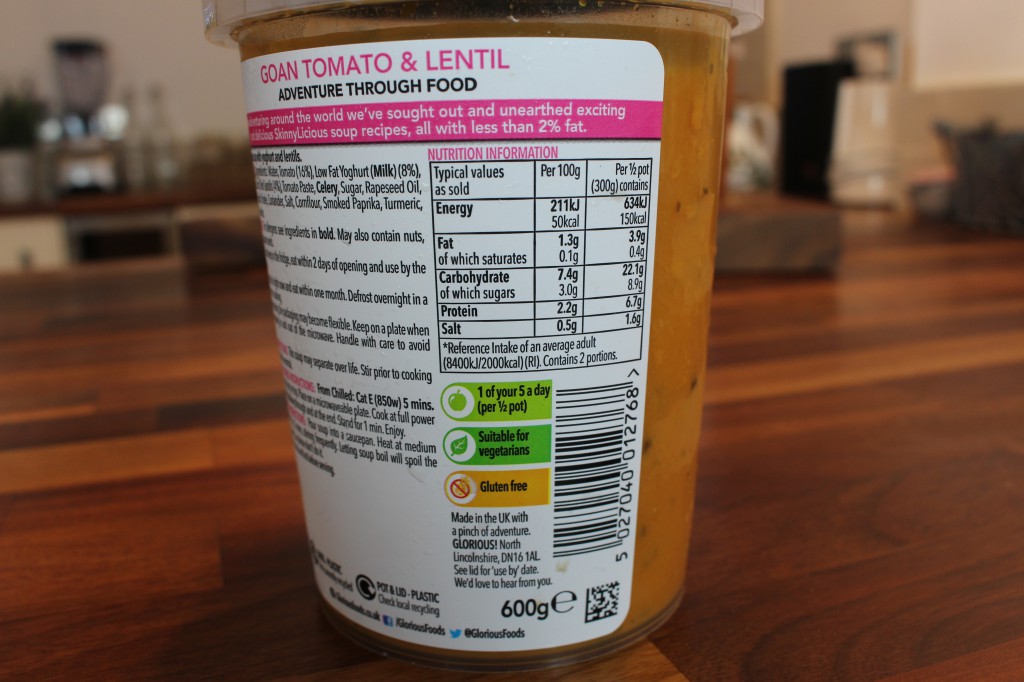
3) The Nutritional Stats
The nutritional label (the numbers in the table!) can be really useful for when comparing two products; for this I would say to use the ‘per 100g column’. I personally like to compare things such as calories, carbs, protein, fibre, fat and salt and I personally go for foods that have a higher protein and fibre contain to help me feel ‘fuller for longer’. When it comes to soups this may mean choosing a chicken, lentil or bean based soup rather than a vegetable based soup (my favourite from the Glorious! range is their Goan Tomato & Lentil – as pictured!).
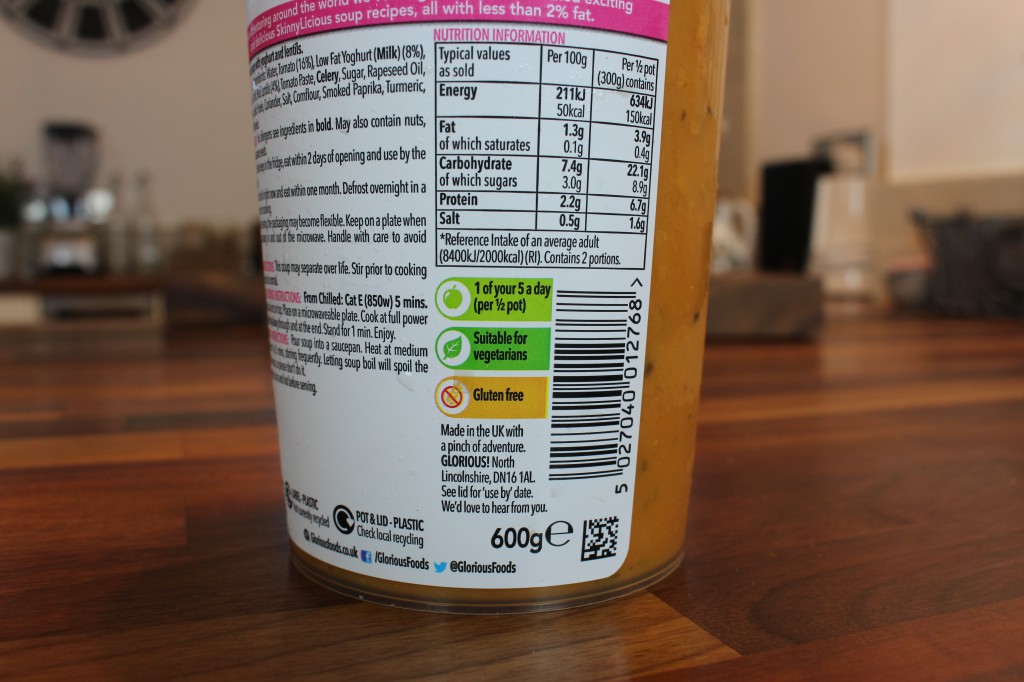
4) The Nutrition Claims
The nutritional claims section (if a product has it) can be useful to see ‘at a glance’ if the food contains 1 of your 5 a day (ideally we should be eating 5-9 portions of fruit and vegetable a day; a portion is a handful), is gluten free and/or is suitable for vegans or vegetarians. On the Glorious! soups range these are labelled clearly in different colours which I think is really useful.
I really hope that you find this blog post useful – do let me now if there’s anything else that you personally look at on a food label!
*This blog post was written in collaboration with Glorious!. All words and opinions written are my own and are 100% honest – I’ve been eating these soups for years! Please red my disclaimer page for more information.
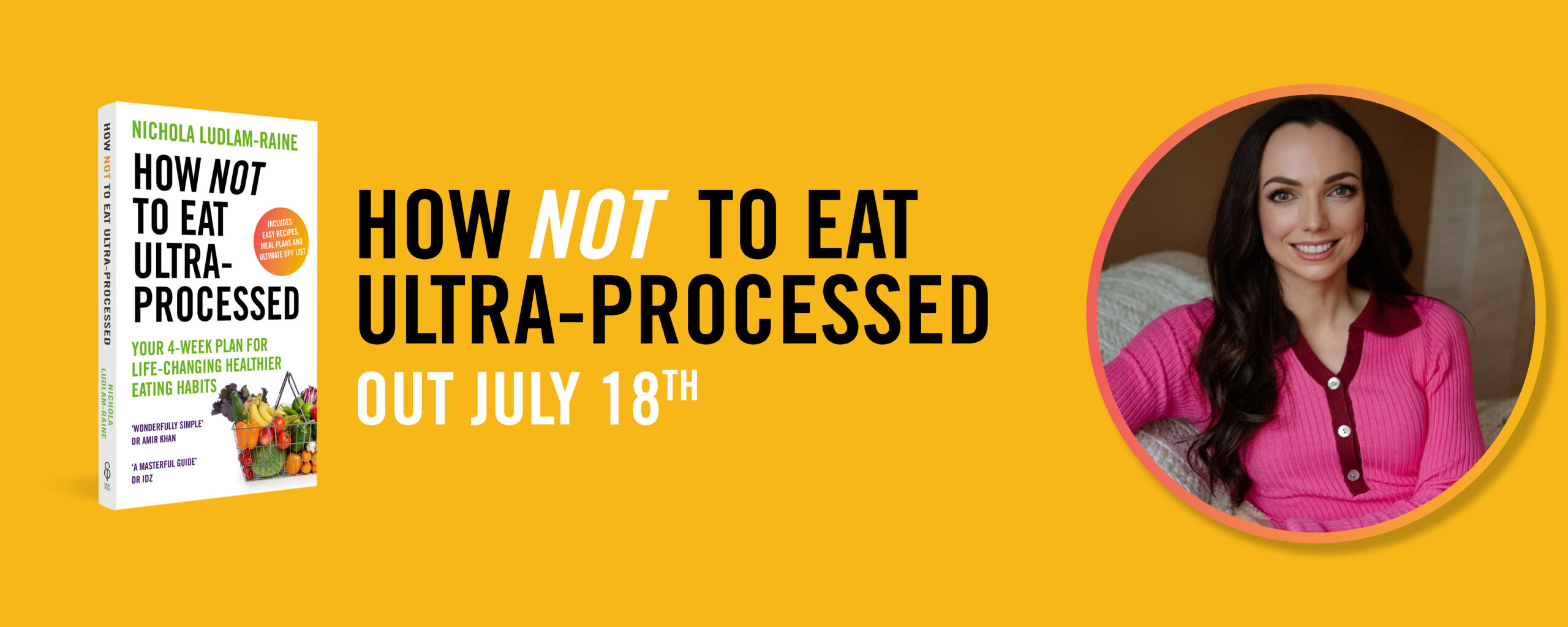
2 Comments